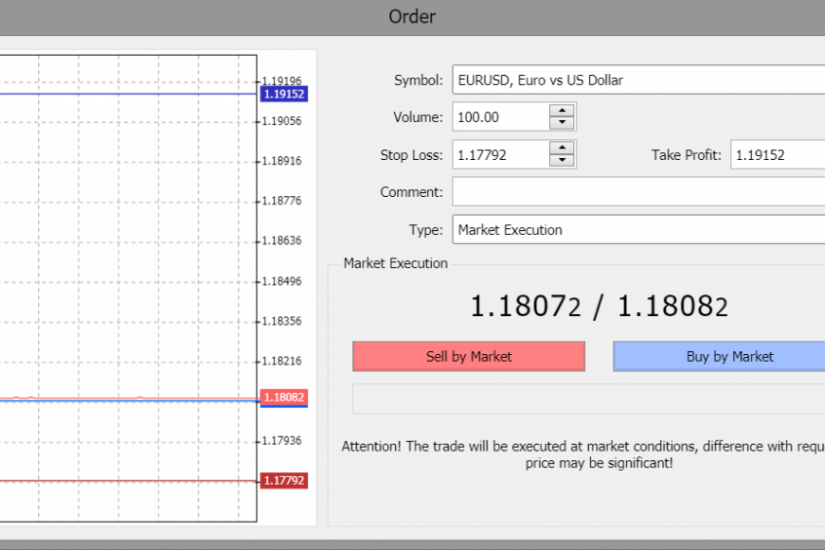Range-bound markets are characterized by price movements that oscillate within a defined range, with clear support and resistance levels. Trading in range-bound markets requires specific approaches to set stop loss and take profit levels effectively. MetaTrader 5 (MT5) provides traders with a range of tools and features to navigate range-bound conditions. In this article, we will explore different approaches for setting stop loss and take profit levels in range-bound markets using MT5.
Setting Stop Loss in Range-bound Markets
In range-bound markets, it is essential to place stop loss orders outside the established range to protect against potential breakouts. Here are a few approaches for setting stop loss levels:
- Beyond Support and Resistance: Set stop loss orders slightly beyond the support or resistance levels that define the range. This approach accounts for potential false breakouts and ensures protection in case price reverses within the range.
- Volatility-based Stop Loss: Consider the market’s volatility when determining the distance for stop loss orders. In low volatility range-bound markets, tighter stop loss levels may be appropriate, while higher volatility may require wider stops to accommodate price fluctuations.
MT5’s built-in tools, such as trendlines and horizontal levels, can help identify support and resistance levels for stop loss placement in range-bound markets.
Determining Take Profit Levels in Range-bound Markets
When trading range-bound markets, taking profits at the appropriate levels is crucial. Here are a few strategies for setting take profit levels:
- Near Support and Resistance: Set take profit levels near the support and resistance levels within the range. These levels often act as barriers where price may reverse or encounter selling or buying pressure.
- Midpoint of the Range: Consider setting take profit levels near the midpoint of the range. Price tends to gravitate towards this area, offering potential profit opportunities as it oscillates within the range.
MT5 provides tools like Fibonacci retracement and range drawing tools to identify potential take profit levels within a range-bound market.
Trailing Stop Loss in Range-bound Markets
Trailing stop loss orders can be particularly effective in range-bound markets as they allow for capturing profits while protecting against potential reversals. When using trailing stop loss orders in range-bound conditions, consider the following:
- Distance from Current Price: Set the trailing stop loss at a distance from the current price that allows for price oscillation within the range while still protecting profits. This distance can be based on factors such as market volatility or the width of the established range.
- Adjusting Trailing Distance: Regularly assess the market conditions and adjust the trailing distance as needed. If price movements become more volatile or the range widens, it may be necessary to widen the trailing stop distance to capture potential profits.
MT5’s trailing stop feature allows for automated adjustments of the stop loss level based on the specified trailing distance.
Monitoring Range Expansion and Breakout Signals
While trading range-bound markets, it is essential to monitor any signs of range expansion or potential breakouts. Key indicators or patterns to watch for include:
- Increasing Volatility: Keep an eye on rising volatility as it may indicate a potential range expansion or breakout. This can be observed through indicators such as Bollinger Bands or the Average True Range (ATR).
- Candlestick Patterns: Look for specific candlestick patterns that suggest a potential breakout, such as long candle bodies or significant wicks beyond the range’s boundaries.
MT5 provides a range of technical indicators and customizable charting tools that allow traders to monitor market conditions and identify potential breakout signals.
Conclusion
Successfully trading range-bound markets requires a specific approach to setting stop loss and take profit levels. By using MetaTrader 5 (MT5) and its various tools and features, traders can effectively navigate range-bound conditions.
When setting stop loss levels, placing orders beyond support and resistance levels or considering volatility-based stops can help protect against false breakouts. Determining take profit levels near support and resistance levels or the midpoint of the range can optimize profit potential.
Implementing trailing stop loss orders allows for capturing profits while protecting against potential reversals. Monitoring range expansion and breakout signals using MT5’s technical indicators and charting tools ensures timely adjustments to trading strategies.
By applying these stop loss and take profit approaches in range-bound markets with the assistance of MT5, traders can enhance their risk management strategies and optimize their profitability.





